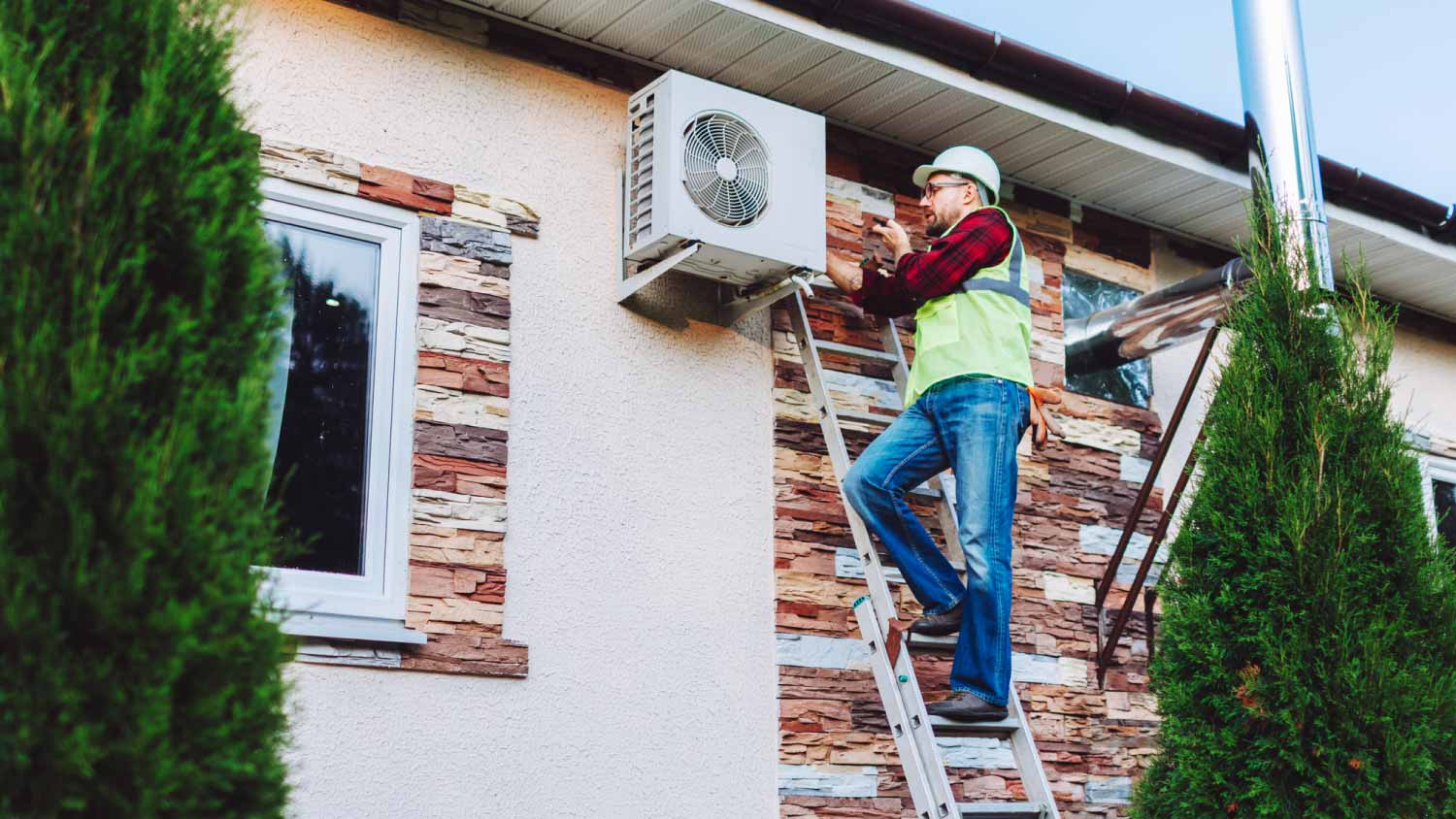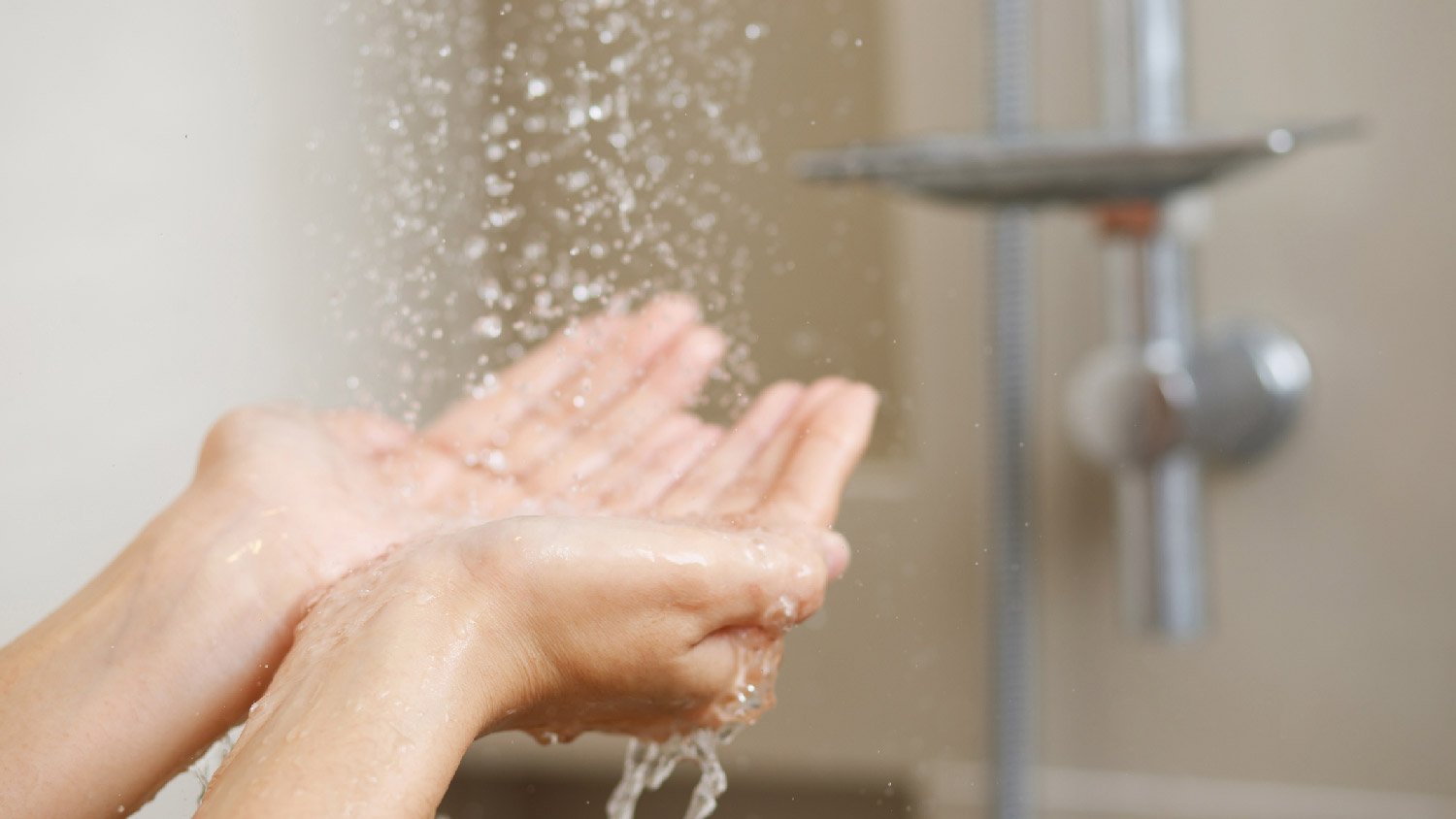
Drilling a well is no small feat. You’ll need to plan for excavating, a pump, and more. This guide will help you estimate and manage your well drilling costs.
Plunge into the differences between these two common water sources


Well water offers a higher level of independence, but all maintenance, including treatment and yearly contamination testing, is your responsibility.
City water offers freedom from maintenance, but it comes at a monthly cost, and you could face interruptions in case of an emergency or weather disaster.
Drilling a well on a property costs $5,300 to $9,200.
City water costs $42 per month, on average.
When it comes to supplying water to your home, there are two main options to choose from. On the one hand, you could pay a monthly fee to use public water supplied by your municipality. On the other hand, you could drill a well and have your own water source, forgoing monthly utility bills but taking on all the maintenance yourself. When it comes to your household, find out whether city water versus well water is right for you with this guide.
One of the biggest differences between city water versus well water is that one includes a monthly bill for water and sewer service. City water is low-maintenance, but you’ll be paying for this convenience, plus the water you use, every month. Well water offers more independence from local utilities, but it also requires more maintenance.
City water is water sourced, maintained, and supplied by your local municipality, and this water is managed by the U.S. Environmental Protection Agency (EPA). You’ll pay a utility fee for access to the water and a sewer service fee for wastewater management by the city. Your home’s plumbing will be connected to the city’s municipal water supply via a water main line.
| Pros | Cons |
|---|---|
| Low setup costs | Vulnerable to contamination |
| Low-maintenance | Monthly water and sewage bills |
| Regularly tested | Less independence |
Best for:
Urban residences
People who want treated water
People who want less responsibility over their utilities
Unlike with well water, which requires drilling a well, if you move into a home with city water, it’s already set up and ready to use. This means you’ll save money on installation costs. Because city water is entirely managed by the municipality, it also means that you’re not responsible for the upkeep, like testing and treating the water or managing the wastewater. This can save you even more time and money on maintenance and repairs.
Speaking of testing, certified agencies regularly test city water. You can even check local water quality reports to stay up to date on your water supply without having to handle the testing yourself.
City water does come with some drawbacks, though. For one, you’ll have to pay for access to the water and the convenience of not handling the maintenance yourself. People with city water will pay monthly water and sewer service bills.
For some people, the treated water provided by municipalities is a bonus. People can worry less about contamination thanks to additions like chlorine and fluoride that keep the water safe. However, this can also make water taste less “fresh” and strip it of some natural minerals that some people may prefer in their water. Keep in mind that while city water is treated regularly, it is also vulnerable to contamination from extreme weather events, though this is uncommon.
In the event of contamination or other issues, the city may need to limit access to the water supply for certain periods of time. In contrast, wells offer some independence and can help you avoid water supply disruptions.
Well water is a private source of water. Wells are large holes drilled deep underground that fill up with groundwater. An electric or manual pump pulls the water from the well and sends it up through a pipe to an exit source (like your kitchen sink).
Unlike city water, well water is not managed by the EPA. If you have a well, you need to keep on top of testing and maintaining your water supply to prevent contamination in your drinking water and the local groundwater.
| Pros | Cons |
|---|---|
| Reliable | More maintenance |
| Sustainable | Higher up-front cost |
| Low long-term costs | Requires filtration |
Best for:
Homes in rural areas
Waterfront homes
People who prefer independent utilities
Well water is a reliable option since it’s separate from the city’s water supply. Even if extreme weather disrupts the local water supply, homes with well water can still use their water as long as the power is still on (well pumps require power). Well water is also considered sustainable because it comes from groundwater. After you use water in your home, a septic system can naturally treat the water and return it to the soil.
"Always call a pro to test the soil before you build a well. If you start drilling in a bad location, you still have to pay the well builder for taking the time to dig that (now useless) hole."
— Constantin Geambasu, Owner of Water Rehab, Gilbert, Arizona
While drilling a new well does come at a cost, one of the major benefits of well water is that it doesn’t come with monthly utility bills. You can save hundreds of dollars per year on utility costs by using well water.
When comparing city water versus well water, well water comes with far more maintenance on your end. You’ll be responsible for testing the water at least once per year, inspecting the well, and repairing or replacing the well pump as needed.
In terms of cost, well water can be a better deal in the long run, but you’ll first have to shell out some money to drill a well if your property doesn’t already have one. Even if you live somewhere that already has a well, you may have to drill a deeper well or another well if the existing one runs dry. A well lasts 25 to 100 years.
While well water doesn’t necessarily need the chemical treatments that city water does, it often still requires filtration to remove sediment and potential contaminants, like lead. There are several different types of water filtration systems to consider for a well, even if it’s just a simple pre-sediment filter.

Some properties may not have a choice when it comes to city water versus well water. Rural properties may need to rely on well water if they are too far from a municipal water line to connect to, and some areas in the heart of a city may not be eligible for a well.
However, if you’re trying to decide whether to live in a modern farmhouse in the countryside or buy a comfortable home in the suburbs, you should consider the costs, sustainability, maintenance, and other top factors.
When it comes to city water, you’re pretty much stuck with what’s available (which isn’t necessarily a bad thing). With well water, you have more opportunities to decide on the size of the well, the type of water filtration system, and even how close or far the well sits from your home.
Drilling a well costs $5,300 to $9,200 on average, but after that, you don’t have to pay for water by the gallon for daily usage. You pay the up-front cost and the occasional maintenance and repair costs, but that’s it.
City water costs $42 per month, but the cost varies by location. For example, residents pay an average of $21 per month in Wisconsin, but households in West Virginia pay $105 per month.
Long-term, well water costs less than city water in many instances. Ultimately, however, the cost will depend on your household’s water usage, the size of the well, and your area’s average water utility costs.
City water doesn’t require any installation. All you need to do is call your local utility company to get the water turned on. The only exception is if you’re planning to hire a local water line pro to install a new water main line to connect your home’s plumbing to the city supply. However, this is rarely needed outside of new constructions.
By comparison, if you want a well on your property, you’ll have to hire a professional company to drill the well. Drilling a well can be a long process involving excavation plus installing the well pump, piping, pressure tank, and electrical components. It could take up to two weeks until you’re able to access clean water from a well
City water is pretty hands-off because the city handles all of the testing, treatment, and wastewater management for the water supply. You can sit back and relax, for the most part.
People with well water have to tackle maintenance tasks themselves. You’ll need to test the water supply at least once per year, maintain any water filtration systems your home has, and maintain a septic system to manage wastewater. A local water softener company can offer advice and assist with any water filtration maintenance you need.
Well water is sourced from groundwater. Water from homes with a well and septic system is naturally treated by bacteria in the system before returning to the groundwater. This leads to a more sustainable system, especially because well water isn’t treated with chemicals.
They were absolutely excellent! Arrived on time, and got straight to work. We had a lot of brush that we cut down, as well as old logs that were apparently left to rot. Anything that couldn't be put into the chipper, they hauled away in the pickup truck. They were very courteous and...
We called for an estimate and the guy came as agreed and provided an estimate based on the measurements he took. He also estimated the length of time for job completion. The morning of the day the work was to begin I called the company and confirmed the project start time. Within minutes...
very well. He placed an extra valve to keep pipes from freezing and the pricing was very reasonable
Troy Rosebrock is a fine person, talented, trustworthy, as well as sensitive to our needs. My husband is ill and in treatment and Troy worked around our schedule. Even after working one day at another job, he called and came to us and put in several hours of work. When he starts a job he...
From average costs to expert advice, get all the answers you need to get your job done.

Drilling a well is no small feat. You’ll need to plan for excavating, a pump, and more. This guide will help you estimate and manage your well drilling costs.

Find out the average heat pump repair cost, what impacts pricing, and how to save. Get transparent estimates and tips for homeowners planning repairs.

Dry wells are handy for anyone who’s experiencing drainage problems. But dry well installation costs can vary depending on its size, location, and volume.

A sump pump doesn’t remove water from your home on its own. Check out this diagram of a sump pump to see how it works with a sump pit, discharge pipe, and more.

What do you do with a natural spring on your property? Natural underground springs are a good source of clean, free water. But how do you tap into it? Keep reading!

If your well water smells like sulfur, you’re not alone. Find out why well water would smell like sulfur and how to get rid of this rotten egg odor.